Don’t forget to follow us on Facebook and Twitter
DAYS 4 & 5 – June 4-5, 2016
Experimental manipulation was the main focus over the last two days of this research expedition at Sur Ridge. Both experiments explored the potential food preferences of two species of sea star that are known to dine on at least one or more species of corals that occur at Sur Ridge. For the first experiment, we collected a whole coral each from three species: a bamboo coral (Isidella sp), a black coral (Lillipathes sp), and a bubblegum coral (Paragorgia arborea). The control was the “skeleton” of a dead bamboo coral, Keratoisis sp. Three sea stars were than placed on areas with live polyps on each coral. An additional set of three sea stars were placed on the long spaghetti-like tentacles that stream from the base trunk of Isidella. It is assumed that these “sweeper” tentacles discourage would-be predators from climbing up to dine on their polyps. These tentacles likely have nematocysts, or stinging cells, much like a jellyfish or anemone. They are all cnidarians, after all. After 24 hours, we observed the three sea stars had left the sweeper tentacles of Isidella, but this was merely a pilot test and we have not been led to any conclusions regarding prey preference yet.
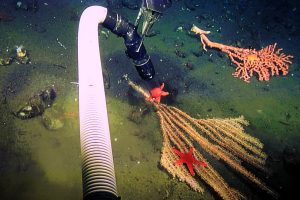
The second experiment placed the same species of sea stars within the branches of “in-situ” bamboo corals (Keratoisis sp and Isidella sp) and bubblegum coral (Paragorgia arborea). We were all impressed by the deft hands of each of the ROV manipulator arm operators that skillfully placed a small sea star into the branches of these corals all while sitting in a control room almost a mile above. It’s akin to virtually decorating your Christmas tree underwater while using chopsticks. We’ll revisit this site in August to see if any effects can be detected.
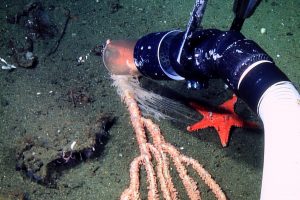
We finished the day by exploring a small ridge to the east of the main Sur Ridge. Large bubblegum corals flanked high outcrops, extending their polyps into the current, which at the end of our dive, was ripping over the summit, preventing the ROV from making any headway. As it turned out, the timing was right, as we had to “pull” the ROV to the surface in order to arrive back in Moss Landing during high tide later this evening.
This blog may be edited in the near future to correct mistakes, revise content, and add higher quality photos, but be sure to come back in August when we’ll join MBARI once again on the Western Flyer to visit Sur Ridge and other special places within our sanctuary.
Chad King
=======================================================
DAY 3 – June 3, 2016
Climate change, pollution, fishing practices, and other human activities have been compromising the health of shallow coral reefs around the world. From bleaching events, to mechanical destruction by humans, or natural disaster, various efforts have been successful in transplanting healthy corals to barren areas to re-establish populations.
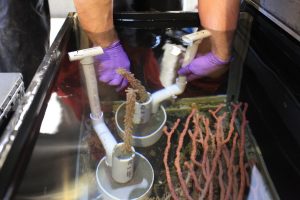
However, this has not been accomplished with deep-sea corals. Yesterday we visited a deep-sea coral transplant experiment that Dr. Jim Barry and his lab had deployed on a prior cruise. It was a total failure. In fact, no coral was visible within the PVC pipes they were inserted into. Science is a process of iteration and refinement to answer questions through observation and experimentation. With that spirit in mind, Dr. Barry and his post-docs set forth with a new method to secure transplanted coral branches from four different species. After collection and transplantation, the individual specimens were set back on the sea floor in the same area from where they were collected. Some specimens showed immediate signs of stress, while others looked quite healthy. We revisited the experiment at the end of the day with the entire lot looking “a little better,” a promising sign. We’ll be back in August to see if this transplantation experiment can be deemed a success. If so, it could have implications for the development of transplantation techniques that may help re-seed areas in the future that come under threat from deep-sea trawling, mineral and gas exploration, coral harvesting, ocean acidification/climate change, or other anthropegenic disturbances not even recognized yet.
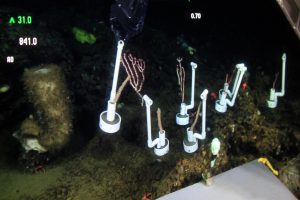
Do we get a green…or blue thumb for our efforts today?
Chad King
=======================================================
DAY 2 – June 2, 2016
Today we conducted one long continuous dive, spending more than 10 hours on the bottom to explore some of the western slope of the northern and middle section of Sur Ridge, an area yet to be visited. Today, we accomplished the following:
- Characterized a portion of the western side of Sur Ridge for the first time. With Sur Ridge approximating the size of Manhattan, in order to characterize it, we need to observe the seamount from a suite of transects that will essentially be a subsample of the entire ridge. If we just observe the “most interesting” areas, we will fail to characterize the ridge as a whole. Also note that characterizing this area is like dropping in from a helicopter in complete blackness, armed with only a flashlight. Now, slowly go forward, less than walking pace for 10 hours across parts of Manhattan and tell me if you can get a general sense of what the entire island is like. Well, you couldn’t, at least, not unless you did this many times from various starting points around the island.
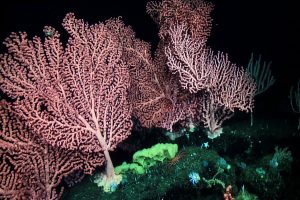
- Collected bamboo corals for ageing and to potentially detect anthropogenic sources of nitrogen (to be performed by a colleague at USGS). Previous work in the Gulf of Mexico has shown how poor water quality from the Mississippi River has impacted deep-sea communities that live what seems a world away and below. We would like to know if there are similar impacts along the California coast.
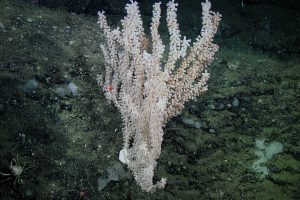
- Collected a variety of rock types for later analyses. Some animals, like a predatory chiton, took the ride up and were photographed.
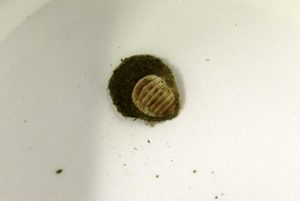
- Observed vesicomyid clams for only the second time at Sur Ridge. These clams live in areas where hydrogen sulfide is seeping out of fissures on the sea floor, emanating from deeper within the earth’s crust. Normally, high sulfide concentrations are lethal to most animals, but these clams have adapted in order to not only protect themselves from the higher sulfide concentrations, but also to transport it to sulfide-loving bacteria living within their tissues. These bacteria then use the energy from sulfide oxidation to fuel the Calvin-Benson cycle, which results in the production of organic carbon, food for the clam! Symbiosis!
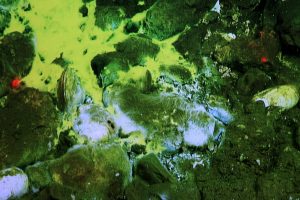
If only we had symbiotic bacteria living in our gut that could fix tacos and ice cream into a healthier alternate source of energy for us.
Chad King
=======================================================
DAY 1 – June 1, 2016
The research vessel Western Flyer departed Moss Landing at 0800 today to visit Sur Ridge for the fourth time in three years. Dr. Jim Barry, chief scientist of this cruise, once again extended an invitation to Monterey Bay National Marine Sanctuary scientists to participate in further characterization of this 800 meter tall bump on the seafloor that is about the size of Manhattan.
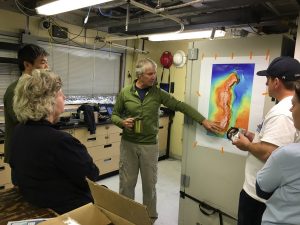
Under calm conditions, the ROV “Doc Ricketts” plunged into the Pacific from the belly of the ship shortly after lunch. Today’s dive accomplished the following:
- Re-visited marked corals and imaged them from the same angles as previously done two years ago. Through video comparison, we will determine growth rates. Some species of coral can live centuries, if not longer.
- Sampled water which will be analyzed for the amount of particulate organic carbon, the main source of food for deep sea corals, as they are passive feeders that rely on the currents to transport food to their polyps.
- Ran wide and narrow field-of-view 50 meter long transects. Video will be quantified later by MBARI scientists. These data will help further characterize the biological community of Sur Ridge.
- Retrieved materials from an experiment set out two years ago to reduce the amount of debris left behind.
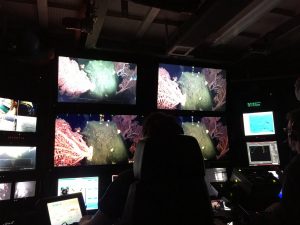
We observed various mobile species, including longspined thornyhead rockfishes, skates, octopii, snailfish, grenadier, and more, but the most notable observation was of large aggregations of crabs from the genus Paralomis. We can only posit at this point as to why there was such a high density in a localized area. Initial theories include a food source (which was not detected) or mating aggregations. Some male crabs will “hold on” to the female and wait for her to molt before mating actually takes place.
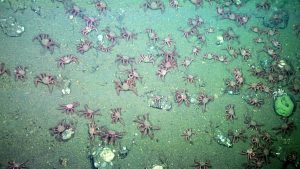
Tomorrow’s dive plan calls for further exploration of the southern portion of Sur Ridge, which appears to be dominated by sedimentary rock. If possible, we will collect several species of corals from different depths for radiocarbon dating to determine their ages. This important bit of information helps paint a picture of the potential longevity of individual corals in this complex and relatively poorly understood habitat.
Chad King